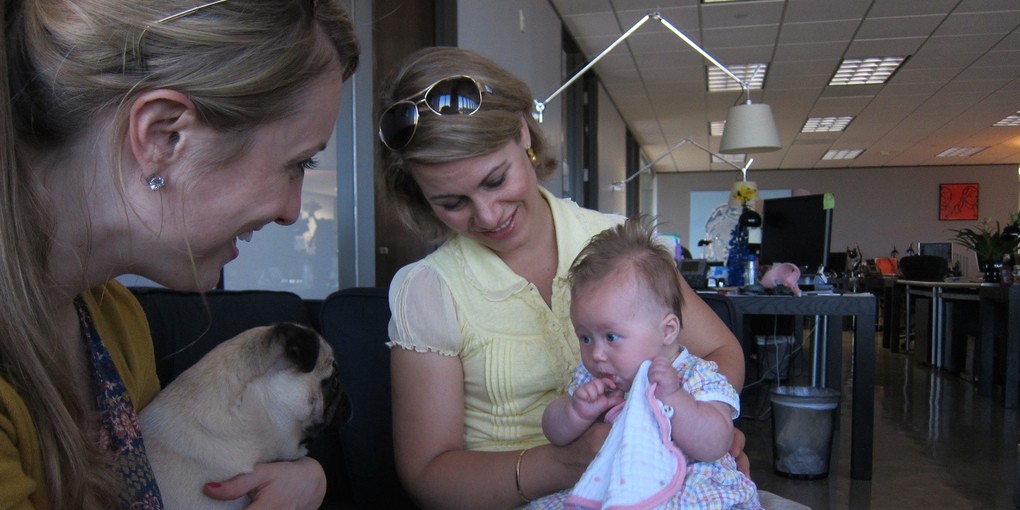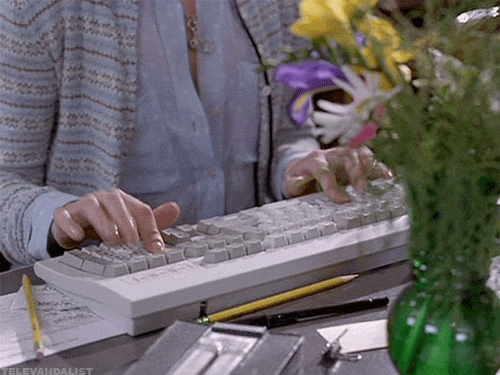New York City, April 19, 2015

★★★★ The warmth of the day before had backed off — spring was not going fully sweaty yet, not at all. Pictures that had sat around unhung for months and months suddenly could be understood to need nothing but a half-minute’s attention with a hammer. There was a cool breeze in the streets, and scooters and strollers and scooters and strollers and scooters. Pear trees in bloom caught and scattered the light. A man with a leather or leatherette jacket weaved hastily through the crowd to catch up with a little girl, also wearing a leatherish jacket, speeding ahead on a pink scooter. Star magnolia blossoms, petals drooping, bobbed in Verdi Square. From the corner of 72nd Street, the pear flowers and the Ansonia were a single off-white Beaux-Arts mass.
The Near Future Is Now

A quirk of our particular moment is that much of our aspirational residential architecture, like the forthcoming tallest residential building in the world, Nordstorm Tower, looks like it was pulled directly from a superhero movie. This tower looks like architecture from the near future because we have been shown that this is the way buildings are supposed to look in the near future — which is why buildings in the near future will look like this.
Acceptable Catcalls
by Jamie Lauren Keiles

Hoooo boy,
You look like someone who really knows how to PROCESS things. I can tell you’ve been hitting the shrink lately because you look like you’ve been making progress on your historically fraught relationship with food! I’d like to get you and your doctor alone in a room and support you while you tell her why you think it’s time to decrease your dose of SSRIs. Mmmm, yeah, break me off a piece of that art you finally got around to creating despite your stressful and time-consuming 9-to-5. Why don’t we head to the bedroom where I can show you how to properly fold a fitted sheet? Or let me lay you down on the kitchen floor and reassure you that purchasing a Swiffer is not a sign that you are growing lax in the anti-capitalist political sensibility you championed during college? Shorty, I gotta ask, what are your preferred pronouns? You single? If so, I am glad you finally sorted out those co-dependency issues with your ex. Later tonight I wanna give you the pipe so you can finally get around to constructing that DIY shelving unit you pinned to your dream apartment mood board two years ago. You know what you look like you need? A reliable weed man who will show up to your apartment at the agreed-upon time and then leave immediately after the transaction is finished. Did you get hurt when you fell from heaven, because if so I will list you as a domestic partner on my health insurance so you can start freelancing full-time without being stressed about health-care coverage. I wanna get deep up inside you in a literal sense and confirm that all of your organs are functioning properly and that there is no need to maintain a consistent low-grade sense of alarm over the prospect that you might be dying of an undiagnosed illness. Can I buy you a drink? Of water, because I know how much you’ve been striving to drink at least two Nalgenes per day in hopes of improving your post-adolescent acne. Let me take you out sometime and tell you all about the ways I’m not going to touch you without asking and demand a story about what your tattoos mean and then argue with you when you say they don’t mean anything. “Smile! Ok, no don’t.” Hah, yeah, I love that obscure quote from Bring It On too. Okay now turn around. Yeaaaaah baby lemme get a good look at that ass before I retreat to the bunker with the other men and only emerge when called upon for mating purposes, not that you have to have kids or anything.
Photo by Kurt Bauschardt
Bully, "Trying"
I have no idea where this fits into the perpetual alt revival and I suppose it doesn’t really matter: Whatever Bully is doing, they seem to be having a good time.
The Case for Office Babies
by Matthew J.X. Malady

we need a bell or alarm to signal whenever there’s a baby in the office
— Tracy Clayton (@brokeymcpoverty) April 14, 2015
Tracy! So what happened here?
Well, a baby came into the office. The baby wasn’t by himself; he was with his parent/guardian/owner. He was tiny and chubby, with big juicy cheeks and thick brown hair cut into a bowl cut that is only cute when you’re a little chubby tiny baby, and he was all over the place and into everything, and I just melted.
I love babies, and I love it when babies come into the office. When I tweeted that we need a bell or an alarm to signal when a baby is in the office, I just assumed that everybody would know that it was because I wanted to know when I should abandon all my work and watch said baby toddle around being a baby. But someone mistakenly thought I meant like a warning bell, so that I can go run and hide and not enjoy this baby, because I guess that’s a thing that awful people would choose to do.
But I am very into office babies and think that every office needs one, just to give us a break from the decidedly grown-up stuff we have to do at work. Everybody needs an office baby break. Sometimes you just need to see a tiny person exploring and redefining a space that you know very specifically as a place that you go to be an adult. Your desk, to you, is a workstation, but to an office baby it’s a big bright shiny thing covered in stuff that might be delicious and fun to chew on.
Also, baby necks smell amazing, so if you can make friends with your office baby and get in a good snuggling it can like totally change your mood from the inside out. I have a theory that an office baby will up the productivity of employees by at least 35 percent.
Are office babies better or worse than office dogs? And is there an age past which kids in the office stop being cute and start being a bother? Or is it all good?
There are pros and cons for each. Office babies smell better, generally, than office dogs. Or at least a freshly washed office baby does. But (well trained) office dogs are likely more obedient and will sit still when you tell them to. Office babies, like babies in general, decide they’re gonna do something and that’s it. They’re gonna throw that thing on the ground, breakable or not, and when you tell them not to throw the thing on the ground you often get temper tantrums, and that’s not conducive to a productive work environment.
But office babies can talk sometimes, and that’s really cool. Everybody loves to hear a baby string their words together, sounding all silly, not making any sense. And if they can’t talk then they usually make cute gurgling sounds and it triggers all your happy endorphins and you feel like life is worth living.
They both poop, but when an office baby poops it’s in a diaper, so it won’t ruin the carpet. And both office dogs and office babies have a tendency to slobber, so both lose there.
I think the prime office baby age is like 6 months to 3/4 years old. After that, they seem less like tiny drunk adults, which are hilarious, and just kind of turn into tiny attitudinal humans who ask too many questions. And teens are definitely out of the question. I do not advise getting an office teen.
Lesson learned (if any)?
Get an office baby! A full-time office baby, with respect to child labor laws, of course. Outsource one if you have to. But definitely get an office baby and list it in the job perks: health insurance, paid time off, office baby, free parking. Just get an office baby. Or at least get an office baby bell so that when there is an office baby on premises, interested employees can ignore their work and attempt to receive cuddles from said office baby.
Just one more thing.
In addition to avoiding office teens, I recommend avoiding the following: office owls, office squirrels, office honey badgers, office mimes, office hungry polar bears, and office Gilbert Gottfrieds.
Photo by Lars Plougmann
Are You Just LARPing Your Job?
Are You Just LARPing Your Job?

Slack, maker of extremely expensive professional chatrooms, is annexing online work culture at a stunning rate. The industry narrative doesn’t quite cover it! Sure, a lot of companies are signing up and closing their Campfire chats, their Hipchats and their IRCs. But the thing about Slack that gives you that low dread of unstoppable acceleration is how fully it encompasses how you talk to coworkers: first it replaces a group work chat, then it gradually replaces your Gchats and the last remaining AIM conversations. Eventually — and this is when you finally begin to understand why, in the big fun-free casino of venture capital, the Slack table is so crowded — it starts to replace email. It’s a weird and distinct feeling, and one that often coincides with Slack apologetics. It is the process of Slackulatory capture.
There may be offices, and types of jobs, for which sitting in a chatroom all day makes everyone more productive. This does not seem to be the case in online media, which is most effusive in its praise for the service. Slack is where people make jokes and register their presence; it is where stories and editing and administrating are discussed as much for self-justification as for the completion of actual goals. Working in an active Slack (or Campfire for that matter!) is a productivity nightmare, especially if you don’t hate your coworkers. Anyone who suggests otherwise is either rationalizing or delusional.
The first way that Slack is truly replacing email is through its creation of a novel form of work-like non-work. There are many millions of privileged people for whom sending and responding to emails creates the impression of productivity, thereby justifying, in part or sometimes even in whole, their jobs. Slack allows, in the most extreme cases, for a full performance of work — the clocking in, the ambient noise, the watercooler discussions, the instant availability and accordant impression of responsiveness — without the accomplishment anything external. Email is extremely effective for people who LARP through their jobs. Slack is even better.
So if at least one of the major styles of Slack use is the semi-public role-playing of work, it makes sense that it would be used to create, and then to project, exclusivity:
Slack’s mission is to “make your working life simpler, more pleasant and more productive.” It seems best-suited for the second goal on that list. Goofing off on Slack is really fun. The chat system makes it easy for users to create their own inside jokes. CollegeHumor treasures an emoji of a gluten-free duck; Briganti says its meaning is unexplainable to outsiders. Deadspin taunts staff writer Greg Howard with a mock rap CD cover featuring his face and dubbed “Hollywood Howard.” P.J. Vogt and Alex Goldman, co-hosts of the Gimlet Media podcast Reply All, have created little emoji of each other’s faces that they use to further develop their lovingly antagonistic office relationship: Goldman drops a P.J. face in Slack to try to get his attention; Vogt inserts the Alex face to signify “bad news.” Slate favors a custom emoji of Outward editor Bryan Lowder with a toboggan Photoshopped onto his head; when editors drop into a private group to workshop headlines, they announce their presence with a taco emoji. When my friend Thomas, a 28-year-old designer, started work at a tech startup in San Francisco, he found that the office had customized its Slack to execute an elaborate hazing ritual. First, they programmed Slack so that “anytime I said anything, it came out as a GIF,” Thomas says. “Then they set up a bot to tell me I was fired every time I posted.”
As more readers perceive your work as sourceless units of attention distinguishable only by length and intensity of pleasure, it has become hard for publications to assert coherent identities (look at the front page of any site that publishes more than twenty times a day — stories that make sense alone in the context of your various feeds feel, taken together in a big unflattering stack, like barely-connected tricks and bids for your time). Slack offers a way to present the outline of an identity without actually manifesting it in your work. Stories about “our work Slack” are invariably intended to make the listener jealous, and always end with some variation of “you had to be there.” This does not work and will be listed among our charges as we are sentenced, one by one, to a life sentence in the future content mines. The machines will not be fooled or impressed by job LARPing.
In the meantime, Slack may find a foothold in actual businesses, in capital-c Corporate America, where it will be subjected to a new set of challenges: record-keeping regulations, regular subpoenas and legal discovery, pan-optical performance reviews, tightly scrutinized HR concerns, high-stakes hacks, and, most importantly, the application of real management. This is when chatting at work will finally cleave into something clearly distinguishable from chatting with friends. Professional emails are EXTREMELY dense with caveat and code and etiquette and formal requirements, and will seem incredibly bizarre to anyone reading them in the future (there is already a major stylistic rift, I think, between emails from offices that use Outlook and email from offices that use, say, Gmail). When mainstream work-LARPing moves to chat, what does that pained, compromised, inauthentically polite-but-pragmatic email tone look like? What are the equivalents of “just touching base” and “let’s loop back in a week” when everyone is logged on and available and oh-so-casual all the time? Will our chat messages all be tagged with our Myers-Briggs indicators? Will offices develop parallel shadow chats, robbing these new digital workplaces of their social vitality (as is right)? We will find out. In the meantime, happy LARPing.
Show Old
Here’s a nice appreciation of “Father Ted,” one of the greatest “dumb funny” comedies of all time, to commemorate its twentieth anniversary.
Museum New

The museum’s arrival signals another shift, too. When Breuer’s Whitney opened, New York City was a much dicier proposition. His fortress, like Frank Lloyd Wright’s Guggenheim Museum several blocks north — which contrived its own enclosed, spiral version of a vertical city — reflected ambivalence about what was outside the front door. Now New York is a safe, glamorous tourist mecca and 24-hour, family-friendly spectacle, and the new $422 million Whitney building, designed by Renzo Piano, opening May 1, lets the city pour in. Grand, columnless, rectangular galleries spill onto large, stepped terraces linked by an outdoor stairway, mimicking the neighborhood’s jumble of low- and mid-rise black-tar rooftops and aging fire escapes. The museum becomes an implicit extension of the High Line: an outdoor perch to see and be seen.
There is a rumor that art might be inside, too — though as Michael Kimmelman’s precise review of the new Whitney museum notes, that might be entirely beside the point for some (many? most?) visitors to the particular slice of Manhattan that has been carved out by the High Line, whose form increasingly and remarkably resembles a playground for a certain breed of carefully articulated money.
We Might Have Eaten 96% of All the Pacific Bluefin Tuna Already
by The Awl
There may be only 40,000 Pacific bluefin tuna left yet in the world. Goodbye, tuna!
